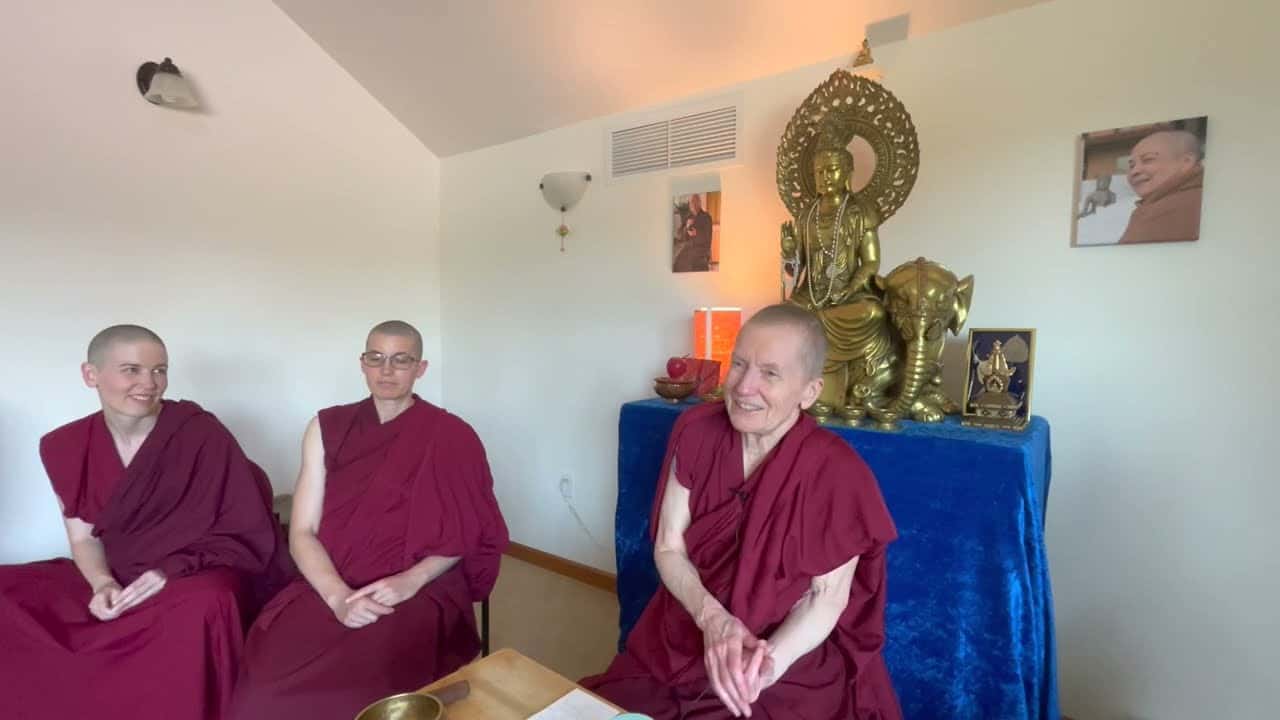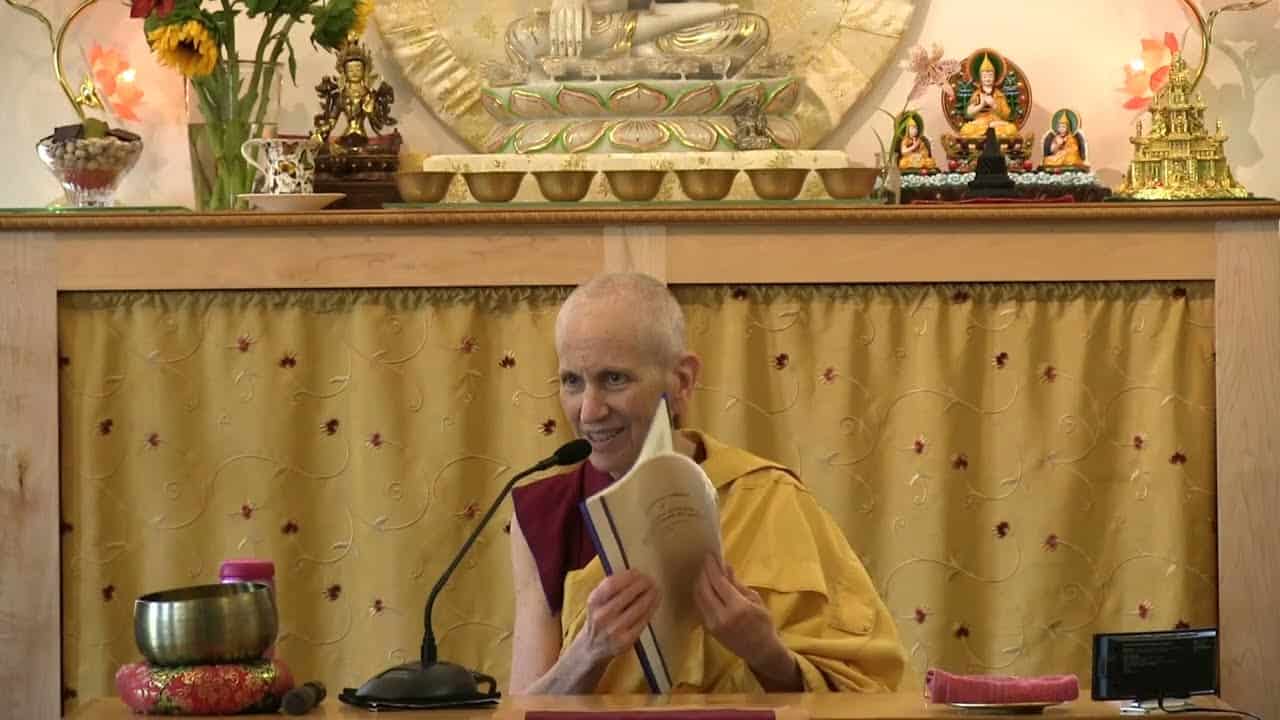Bodhisattvas’ path to awakening
77 Samsara, Nirvana, and Buddha Nature
Part of an ongoing series of teachings (retreat and Friday) based on the book Samsara, Nirvana, and Buddha Nature, the third volume in The Library of Wisdom and Compassion series by His Holiness the Dalai Lama and Venerable Thubten Chodron.
- Arhat’s nirvana with remainder and nirvana without remainder
- Path of accumulation
- Path of seeing
- Bodhisattvas taking rebirth due to their intention and great resolve
- Sharp faculty bodhisattvas
- Ten bodhisattva grounds
- Pure ground bodhisattvas
Samsara, Nirvana, and Buddha Nature 77: Bodhisattvas’ Path to Awakening (download)
Contemplation points
- What does it mean that an arya bodhisattva is “in samsara, but not of samsara?” What are these beings able to do at this stage on the path that allows them to fulfill their aspirations?
- How often do you think about bodhichitta each day? How much effort do you have to exert to do physical and verbal actions to benefit others? Now imagine a bodhisattva who, because of their strong intention, only needs to exert a little bit of effort in order to benefit others. Does this seem possible to achieve? What do you need to practice in order to progress to the point of having this effortlessness?
- What will you do with your time when you are no longer working/retired (or what are you currently doing if you are already retired). Imagine being of service to other beings until the very end of your life. What can you do now to move in that direction?
- What are the causes of being born in a pure land? Why is being born in a pure land beneficial?
- Review the stages of the path to liberation for those following the Sravaka Vehicle and then the path to full awakening by those in the Bodhisattva Vehicle. Get a sense of your potential. Realize that you can progress through these paths and stages and attain the peaceful results.
Venerable Thubten Chodron
Venerable Chodron emphasizes the practical application of Buddha’s teachings in our daily lives and is especially skilled at explaining them in ways easily understood and practiced by Westerners. She is well known for her warm, humorous, and lucid teachings. She was ordained as a Buddhist nun in 1977 by Kyabje Ling Rinpoche in Dharamsala, India, and in 1986 she received bhikshuni (full) ordination in Taiwan. Read her full bio.


